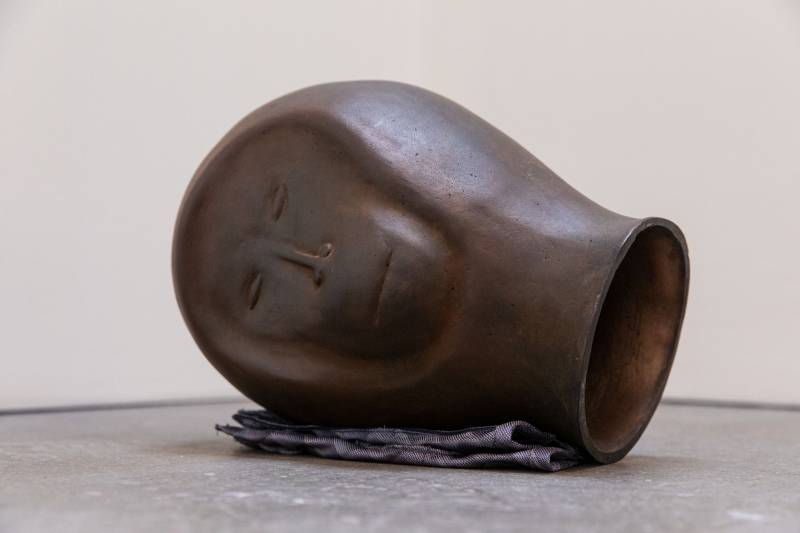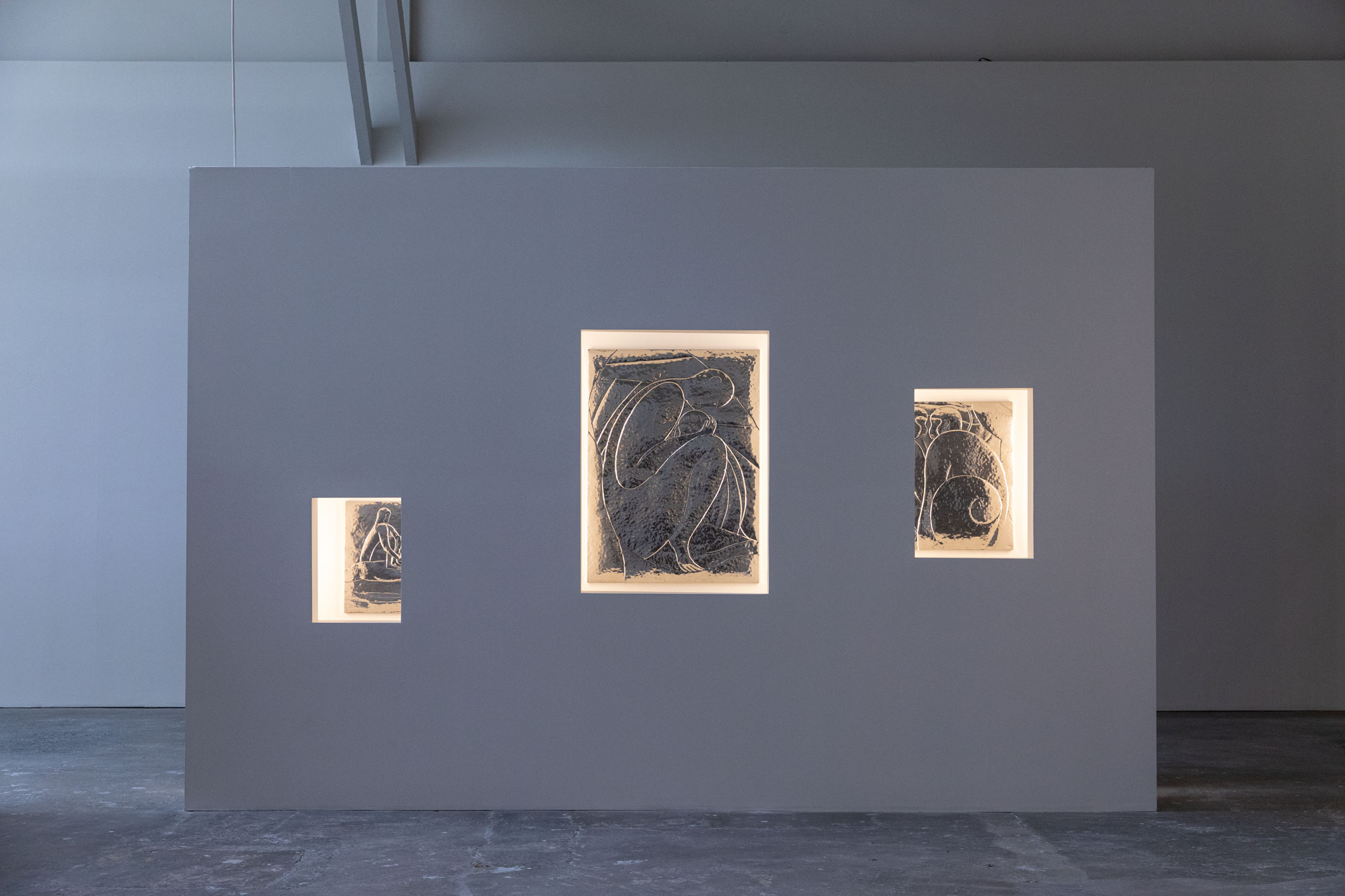Upon entering Rodrigo Hernández’s with what eyes?, one is required immediately to navigate the show’s installation, a series of maze-like walls and enclosures, erected like stage props around Hernández’s sculptures and hand-hammered steel reliefs.
Here, the fabricated white walls seem cast as white walls, dwarfed amusingly by the Wattis’s warehouse exhibition space. The Mexico City-based artist has restructured the building to play at an art gallery, both investigating and exposing this peculiar brand of architecture.
Each of Hernández’s works are, from certain angles, obscured by the installed mise en scène. At the center of the exhibition, he has painted an elevated surface with nested rectangles rendered in semi-opaque, industrial colors. A passageway splits the painting in two.

I think immediately of Josef Albers, who I accidentally call Joseph Beuys, which Diego Villalobos, the show’s curator, notices and tactfully corrects. Villalobos suggests that in a Latin American context the sculpture might remind a visitor of the angular shadows and dense color fields of architect Luis Barrágan. The composition is modern, holding all of modernism’s vague scientific implications.
While working on the exhibition, Hernández looked to the philosopher David Peña-Guzmán’s book When Animals Dream as inspiration. Do animals dream? This question is Peña-Guzman’s sincere undertaking, and yet it is impossible to definitively answer. The metrics are wrong, the language doesn’t translate; we lack the capacity to speak to animals. This is not a question made in their terms.





